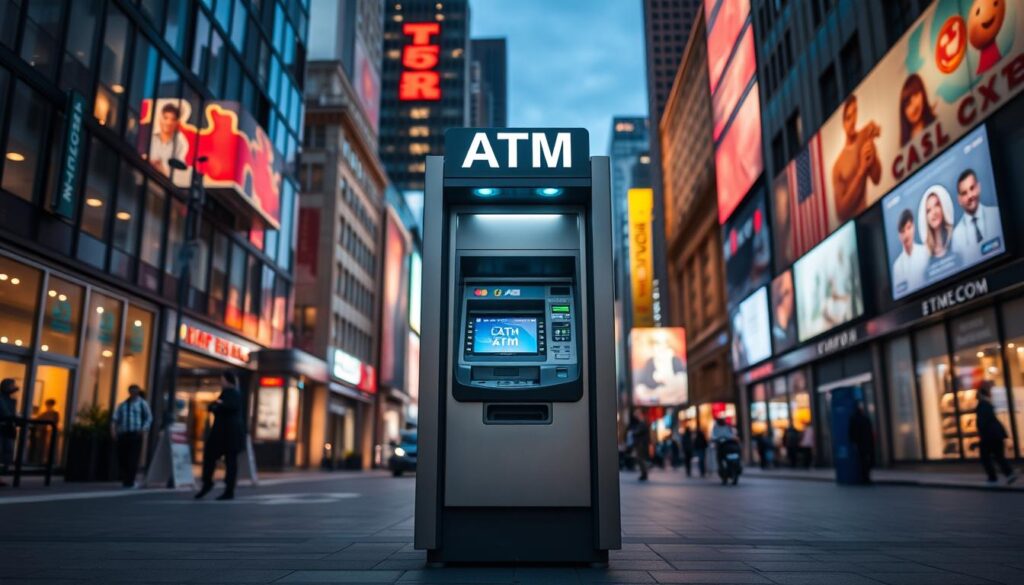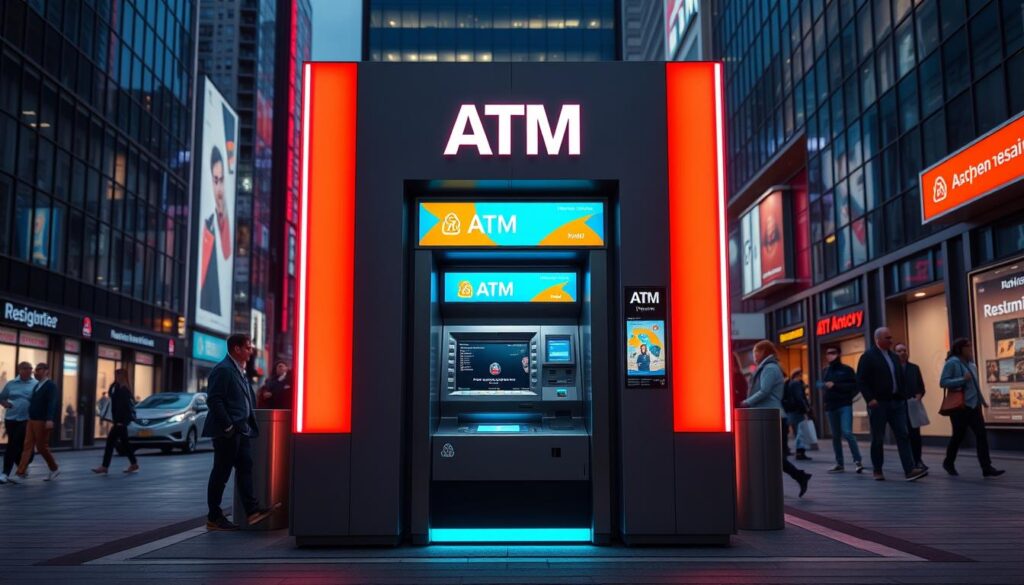Did you know the United States has 425,000 ATMs? Out of these, 222,000 are owned independently. This huge network is key to our banking system, giving millions easy access to cash. If you’re thinking about starting an ATM business, now is a great time to jump in.
An ATM business lets you be your own boss with a simple yet profitable model. By placing ATMs in busy spots, you can make money through fees and surcharges. Plus, the ATM industry offers a high return on investment, from 35% to 70% or more. This makes it a great choice for entrepreneurs looking to make money.

In this guide, we’ll show you how to start and run a successful ATM business. We’ll cover everything from understanding the industry and legal needs to choosing the right equipment and growing your business. This guide is for anyone, whether you’re new to business or have experience in financial services. It will give you the knowledge and tools to succeed in the ATM market.
Understanding the ATM Business Landscape
Industry Statistics and Trends
The ATM industry in the United States is booming. There are 425,000 ATMs across the country. Among these, 222,000 are owned independently, opening doors for business owners. The average fee for using an ATM is $2.77, and merchants get $0.50 to $1.00 per transaction.
ATM owners make between $0.10 and $0.20 per transaction. The global ATM market size hit USD 20.18 billion in 2020. It’s expected to grow at a 4.9% CAGR, showing a bright future for ATM businesses.
Benefits of Owning an ATM Business
Starting an ATM business comes with many benefits. It offers a predictable income stream from transactions. ATMs require low maintenance and have minimal costs, making it a good choice. The growth opportunities in the ATM market can increase your revenue. Plus, the flexible work hours suit those who value independence.
| ATM Industry Statistics | Value |
|---|---|
| Total Number of ATMs in the US | 425,000 |
| Number of Independently Owned ATMs | 222,000 |
| Average ATM Fee or Convenience Fee | $2.77 |
| Average Commission Payment to Merchants | $0.50 – $1.00 |
| Average Interchange Net Income | $0.10 – $0.20 per transaction |
| Global ATM Market Size (2020) | $20.18 billion |
| Global ATM Market Growth (CAGR) | 4.9% |

atm business: Establishing a Solid Foundation
Starting an ATM business needs careful planning. First, you must register your business and get the right ATM business license and permits. This makes sure you follow all laws.
Next, setting up a business bank account is key for handling ATM money and cash flow. You also need to get business insurance to protect your money and avoid risks.
Securing Banking Relationships
Getting banking relationships is a big step. The ATM processor needs a special bank account for managing cash and transactions. You’ll need to fill out an ACH form and give a voided check for the banking arrangements.
But, some banks might not want to work with ATM businesses. So, it’s smart to find a bank that fits the industry’s needs. Good banking relationships help your ATM business run smoothly.

By focusing on the legal and financial basics, you’re setting a strong base for your ATM business. With the right registrations, licenses, permits, banking, and insurance, you’re ready to move forward. You can then focus on running your business.
Choosing the Right ATM Equipment
Starting an ATM business means picking the right equipment. The ATM type affects cash capacity, security, and user experience. Let’s look at the atm machine types and what to consider:
Evaluating ATM Machine Types and Features
There are mainly three types: wall mount atm, free standing atm, and through-the-wall atm. Wall mount ATMs are great for small businesses with less cash need. Freestanding ATMs are popular among IADs for their flexibility and cash handling. Through-the-wall ATMs offer better security and are perfect for busy places.
When picking an ATM, think about its quality, security, ease of use, and reliability. Look for well-known atm manufacturers like Hyosung, Genmega, and Triton. This helps find ATMs that fit your business needs and budget, whether new or refurbished.
Choosing the right ATM is all about understanding your needs, transaction volume, and customer wants. Making a smart choice ensures your ATM business thrives and makes money.
Implementing Strategies for Growth and Profitability
As an ATM business owner, finding the right surcharge fees and choosing the best locations are key. The surcharge fee is your main income, usually between $1 and $8, with $3 being common. Some also add a percentage fee, from 1.5% to 2%, allowing for higher charges up to $200-$300 or more.
When setting your ATM surcharge fees, aim for a balance between being competitive and making a profit. Think about the location, like a busy casino or a low-income area. Also, consider the deal you make with the location owner, as it affects your earnings.
Determining Optimal Surcharge Fees
To find the best surcharge fees, study the local market and competition. Listen to what your customers want to pay. This way, you can set fees that are fair and profitable. Keep an eye on your fees and adjust them to keep attracting customers while making money.
Selecting Lucrative Locations
Choosing the right spots for your ATMs is vital. Look for places with lots of people and not too many ATMs, such as:
- Convenience stores
- Gas stations
- Casinos
- Bars and restaurants
- Retail stores
When making deals with locations, think about the revenue-sharing agreement. Good terms can help you stay competitive and increase your earnings.
By using these strategies and keeping up with market changes, you can grow and make more money in your ATM business. This will help you succeed in the long run and stay ahead of the competition.
Conclusion
Starting an ATM business can be very profitable. The ATM industry is growing fast. It offers a steady income, low upkeep, and the chance to grow. Plus, you can work when you want.
To start an ATM business well, you need to know the industry. You must also have a strong legal and financial base. Choose the best ATM equipment and use smart strategies to make money. This includes setting the right surcharge fees and picking good locations.
By following this guide, you can succeed in the ATM business. The industry has changed a lot. New technology and customer needs are pushing ATMs to offer more than just cash.
As competition gets fiercer, it’s important to keep good customer service. Always look for the best places to put your ATMs. This will help you stand out and do well.
Whether you lease ATMs or buy your own, the business is full of chances. With the right knowledge and planning, you can meet the growing need for easy banking. You can build a successful ATM business.
